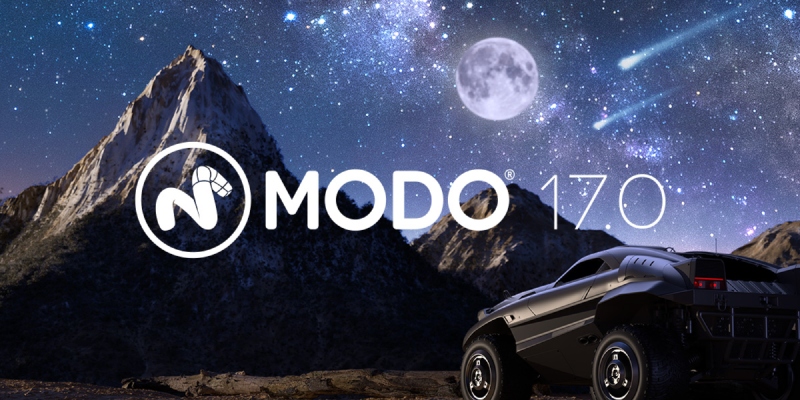
British visual effects software development company Foundry has released Modo 17.0, a significant update to its 3D software that overhauls internal systems to provide notable performance increases.
These enhancements help artists by providing the interactivity necessary for modern asset creation workflows, with an additional focus on quality-of-life features in multiple areas. Foundry has also bundled OTOY’s Prime version of OctaneRender — which gives artists a speed increase of up to 50x over traditional CPU renderers, straight out of the box.
“There’s so much demand and expectation for top-quality 3D graphics,” said Foundry product manager Greg Brown, “With 3D asset creation becoming widely adopted, performance is paramount for the future of DCC apps. Modo 17.0 sets a foundation for increased performance now, plus further enhancements well into Modo’s future. Additionally, bundling the Prime version of the amazingly powerful OctaneRender from OTOY with Modo 17.0 will speed up the entire experience, from modelling to final render, reducing performance barriers for artists.”
Finish any project faster
Modo 17.0 provides a performant and interactive experience while establishing a new technological foundation for further performance enhancements. Artists working on Apple Silicon machines will also see an additional speed increase of 50 per cent on average.
This is the beginning of the new Modo
The improvements that have been made to Modo can be summed up by one goal — to build the future of 3D asset creation. The Modo community can expect a return to more frequent releases for Modo in 2024 — that build on the foundation of 17.0 to further accelerate more aspects of Modo. Foundry is making a 3D application that is tailored to enhance the capabilities of experts and make those capabilities easier for novices to leverage.
Better tools for any job
Foundry has enhanced several capabilities of Modo’s modelling tools, including:
- Decal workflow — It’s now faster and easier to use decals and wrap flat images onto complex surfaces with minimal distortion and no UV creation.
- Primitive Slice — You can now clone multiple slices of the same shape at once, making it easier to produce complex patterns. A new Corner Radius feature rounds corners on rectangles and squares, so you can make quick adjustments without switching between presets.
- Mesh Cleanup — Foundry has added the ability to automatically fix broken geometry and gaps with this tool, so you can stay productive and avoid interrupting your creative flow.
- Radial Align — Radial Align turns a selection into a flat circle, however, artists frequently need a partial radius and not a complete circle for things like arches. Modo 17.0 ships with the ability to create a partial radial alignment.
- PolyHaul — PolyHaul combines many of the most used modelling tools into one streamlined tool. This means artists can spend less time jumping between separate tools, helping them to stay in the flow-state that Modo excels at.
“Modo continues to provide an unmatched modelling toolset and is key to the success of our 3D pipeline,” said New Balance director of 3D visualisation William Vaughan. “We’re excited about Modo 17.0’s enhancements, especially the speed increase seen in tools like Edge Slice, Polygon Extrude, and Loop Slice, which we use daily.”
OTOY founder and CEO Jules Urbach said, “We are thrilled to bundle OctaneRender with Modo 17.0, bringing instant access to the industry’s first and fastest unbiased GPU render engine. Our mission is to democratise high-end 3D content creation, enabling anyone with a modern GPU to create stunning motion graphics and visual effects at fractions of the cost and time of CPU architectures. We are excited to see how Modo artists integrate OctaneRender’s GPU-accelerated rendering platform into their creative process, including the ability to scale large rendering jobs across near unlimited decentralised GPU nodes on the Render Network.”

